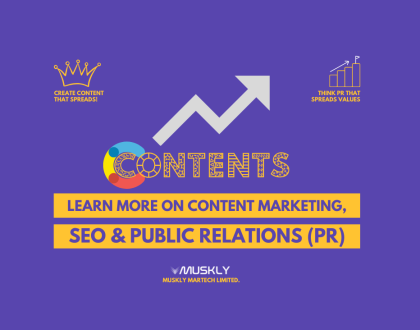7 Proven Strategies for Successfully Pitching Press Releases to Journalists!

When it comes to getting your press release noticed, the art of the pitch is crucial. We’ve gathered seven strategies from marketing managers and CEOs, ranging from tailoring your pitch to crafting a killer subject line. Dive into the collective wisdom of these professionals to learn how to make your press release stand out to journalists.
- Tailor Your Pitch to Each Journalist
- Research for Impact
- Add Value with Multimedia Content
- Combine Personalization and Relevance
- Offer Multimedia to Enhance Your Story
- Highlight Newsworthiness for Journalist’s Audience
- Craft a Killer Subject Line
Tailor Your Pitch to Each Journalist
Blasting out the same press release to multiple journalists is a surefire way to get the brush-off. Their inboxes are already stacked, so you need to make your pitch stand out. Do your homework—read up on the reporters you’re hoping will cover your story. What topics do they typically write about? What’s their style and voice? Speak their language. Show them you’re not just spraying and praying, but that you truly understand what they and their readers care about.
A little personalized attention can go a long way in cutting through the noise. Provide context on why your news matters to that journalist’s readers. If you can offer an exclusive angle or early access, highlight that perk, as it can be one of the most powerful tools for getting your news published.
Most importantly, build relationships with journalists over time—familiarity breeds receptiveness when you have news to pitch. The key is making the compelling news value clear from the outset through a pitch custom-crafted for that specific journalist.
Ricci Masero, Marketing Manager, Intellek
Research for Impact
Personalization is key when pitching press releases. It need not be lengthy; a few unique sentences in the body of your email will increase the number of journalists who actually read the attachment. But make sure to do your research. Point out previous articles the journalist has written, and why you think they’d be a good candidate to spread this particular story. Use their name and keep it casual.
Press releases can feel sterile, and journalists might get dozens a day. Setting yourself apart with personalization adds time, but is well worth it; I’ve found that a friendly opening paragraph makes it more likely my release gets printed.
Rob Reeves, CEO and President, Redfish Technology
Add Value with Multimedia Content
One of the top forms of content that attracts any journalist is a real-life story. When pitching content or ideas, it’s always a good idea to use case studies, professional photographs, statistics, and expert commentary to add a sense of high value and reliability. This could include past work that has been completed, along with a review or feedback.
Annie Everill, Digital marketing executive, Imaginaire
Combine Personalization and Relevance
Personalization combined with relevance is one of the most effective press-release pitching strategies ever. Journalists receive hundreds of press-release pitches in today’s news and media landscape daily. It’s important to make your pitch stand out. Personalization can be the difference.
This means that you’ll need to do your homework: know the beat, the latest news, and how you’ll be able to add value to the news they’re covering.
Pitching your press release in a way that shows that you understand their interests and that you’ve thought about how your story relates to their audience will show respect for their job and significantly increase your chances of getting your press release published.
For example, when Messente has an important news story, we don’t just send a general email out to our media contacts. We choose journalists whose articles match our news story and highlight specific articles they’ve written that are relevant to our story. We’ve found this not only helps us get more coverage but also helps us build relationships with journalists over time.
Remember, the aim is to simplify the journalist’s task by giving them a story that’s not just newsworthy but personal and relevant to their readers. Personalization and relevance are at the heart of media relations.
Uku Tomikas, CEO, Messente
Offer Multimedia to Enhance Your Story
A great strategy for pitching press releases to journalists is using multimedia. Combining high-quality visuals like pictures, infographics, videos, or diagrams will improve and simplify your pitch’s appeal. They act as a hook for journalists while providing them with ready-made article content. To increase engagement, deliver multimedia content compatible with online publications and social media.
A few images or a short video that ties into your press release’s narrative will make it more memorable and shareable. Also, offering journalists exclusive multimedia materials or behind-the-scenes footage could motivate them to cover your story. Multimedia is a simple but effective approach to increasing your press release’s value among journalists and ensuring it gets published.
Faizan Khan, Public Relations and Content Marketing Specialist, Ubuy Australia
Highlight Newsworthiness for Journalist’s Audience
Journalists receive pitches like this often, so you’ll need to convince them that your company has done something noteworthy enough to warrant news coverage. The press release must provide information that the journalist’s audience will care about.
Eric Novinson, Founder, This Is Accounting Automation
Craft a Killer Subject Line
Keep it short and sweet, like a tweet from someone you actually want to hear from. Here’s our company game plan: Craft a Killer Subject Line.
Think of your email subject line as the headline of your own personal newspaper. It needs to grab attention, spark curiosity, and make that journalist think, ‘I’ve got to read this!’
If your subject line can make them pause their endless scrolling, you’re halfway there. Your subject line should be like a teaser trailer for the box-office knock-down blockbuster that is your press release. Make it so compelling that ignoring it would feel like a crime, and you should be golden.
Andrew Jenkins, Owner, Catalyst RVA Marketing Agency
Recommended Posts

5 Key Reasons Why PR is Crucial in the AI Era!
April 20, 2024

7 Significant Ways AI Will Transform Public Relations!
March 5, 2024

10 Most Effective Tips for Emailing Press Releases to Journalists!
February 10, 2024

